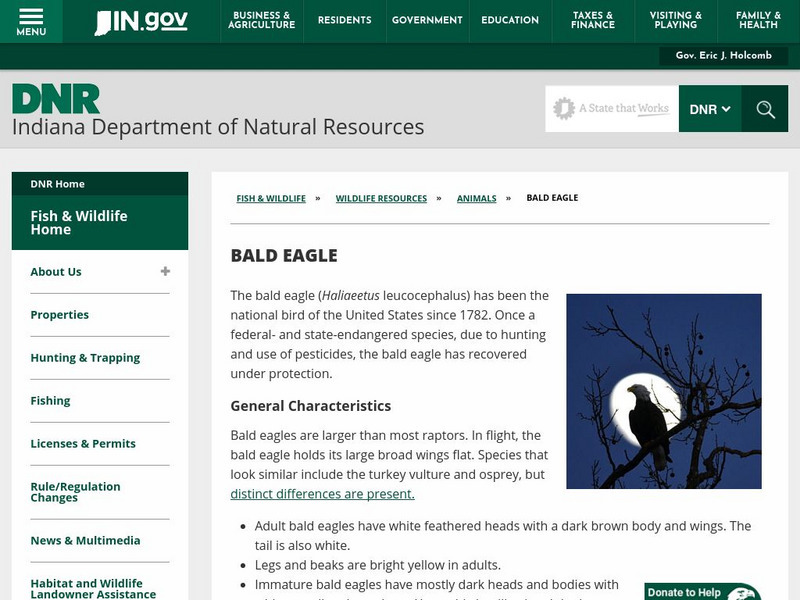Hi, what do you want to do?
Curated OER
Quiz: Forest Animals
In this science worksheet, 3rd graders will respond to questions all pertaining to animals found in the forest. Students will use the clues and visual aids provided to answer ten questions.
Curated OER
Comma Worksheet 2
In this grammar worksheet, students insert all necessary commas in fourteen sentences. Students check to make sure that each sentence is grammatically correct.
Curated OER
Letter Pronunciation - I e I Sound
In this letter e worksheet, learners circle the word that best describes the picture. They then write a sentence using that word. There are 7 questions to do on this worksheet.
Curated OER
A Symbol of Myself
Students explore their own uniqueness. In this "getting to know you" lesson, students create a clay symbol representing their own personality traits. Students write a short description of the symbol and why they chose it.
Curated OER
Translate Animal Names: International Phonetic Alphabet
In this International Phonetic Alphabet worksheet, students respond to 20 fill in the blank questions that require them to translate animal names to the International Phonetic Alphabet keys.
Curated OER
Visual Pictures of the Buffalo National River
Students create art in a Buffalo National River unit. In this Buffalo River art lesson, students create woven rugs, make baskets, create pottery bowls, build log cabins, and construct tipis. They create a bulletin board where the...
Curated OER
Animals
Second graders discuss the term "endangered". They identify the reasons some animals are in danger of being wiped out. They discover ways humans can help the species survive.
Curated OER
Mimicking Nature; Science, Aviation, Flight, Wings
Young scholars consider the relationship between form and flight and investigate the history of man made flight and how wing shape and flexibility affects the maneuverability of an aircraft.
Curated OER
Raptor Poster Project
Students create posters about raptors. They synthesize information they read about raptors and select a raptor. They draw a picture of their raptor and include facts relating to where it lives, characteristics, feeding habits, size, name...
Curated OER
The Flights Of The Phoenix
Students investigate the use of the Phoenix in Japanese and Chinese art while making connections to the use of the Phoenix in the book Fahrenheit 451. This lesson can be adapted for grades 8 through 11 but was originally for 8th grade...
Curated OER
A Day in the Life
Students use their research skills to investigate the behavior and characteristics of a rainforest animal. After creating a diary entry, they illustrate the habits and life cycle of the animal. They write the diary entry from the point...
Curated OER
Geese and Sandhill Cranes of Nebraska
Learners gather information on the geese and cranes found in Nebraska. Students explore ways they can help save their habitats. Also, learners use additional general information they connect artwork to their research topic.
Curated OER
Owl Pellets: A Fowl-Up, Chuck!
Students discover the world of owls as predators. After watching a video of owls hunting and eating, are introduced to owl pellets. Students dissect their own pellet and match the prey's bones to a bone diagram.
Curated OER
Eeeee -- It's a Mouse!
Students recognize the long "e" sound, and identify it in spoken words by learning letter symbols. Students participate in role playing and tongue twisters to learn the long "e" sound. By learning phenomes, students are taking the...
Curated OER
Vocabulary; Idioms/Phrasal Verbs Using Names of Animals,-Part 1
In this foreign language worksheet, students read ten sentences with missing words. They select the best word to fill in the blank from a list of three that are given. Each sentence contains an idiomatic phrase.
Curated OER
Food webs and Energy Flows
Learners become familiar with food chains. In this food chains lesson, students understand that as consumers eat other consumers energy is passed. Learners understand the vocabulary associated with food chains.
Curated OER
ESL Vocabulary-Animals
In this ESL vocabulary worksheet, students study a chart of pictures and animal names, then unscramble names, watch a video and list animals seen, fill in missing letters, complete an animal crossword and classify given animals.
San Diego Zoo Global
San Diego Zoo: Bald Eagle
This resource presents a complete fact sheet on bald eagles that includes a look at why bald eagles are "bald," what bald eagles eat, how their vision works, their courtship and mating behavior, their nesting and reproductive behaviors,...
Other
Bradfords Woods: Eagles to the Nest [Pdf]
This thematic curriculum which focuses on bald eagles revolves around a three-day field trip to Bradford Woods in Indiana. However, many of the activities could be adapted for other environments, and the background material is useful,...
Better Lesson
Better Lesson: Birds Help Their Young Survive (Bald Eagles)
Birds protect their young in some cool ways! See how our national bird cares for its chicks. Students will read a National Geographic article about Eagles becoming extinct, and will watch a video on Iowa Bald Eagle cameras. Students will...
San Diego Zoo Global
San Diego Zoo: Steller's Sea Eagle
This excellent resource from the San Diego Zoo presents extensive information on Steller's sea-eagles including details about their habitat, physical characteristics, size, diet, family life, conservation status, and fun facts.
Oakland Zoo
Oakland Zoo: Bald Eagles
Meet the bald eagle and discover fascinating facts and statistics. Learn about its physical characteristics, habitat, diet, behavior, breeding patterns, conservation, and more.
National Audubon Society
National Audubon Society: Bald Eagle
Find the drawing and original text of the entry about the bald eagle from John James Audubon's 1840 edition of "Birds of America."
Other
Dnr: Bald Eagle
A detailed look at the American bald eagle, America's national symbol. Topics include ..habitat, physical characteristics, mating, young, enemies, food, and restoration.























![Bradfords Woods: Eagles to the Nest [Pdf] Lesson Plan Bradfords Woods: Eagles to the Nest [Pdf] Lesson Plan](https://static.lp.lexp.cloud/images/attachment_defaults/resource/large/FPO-knovation.png)


